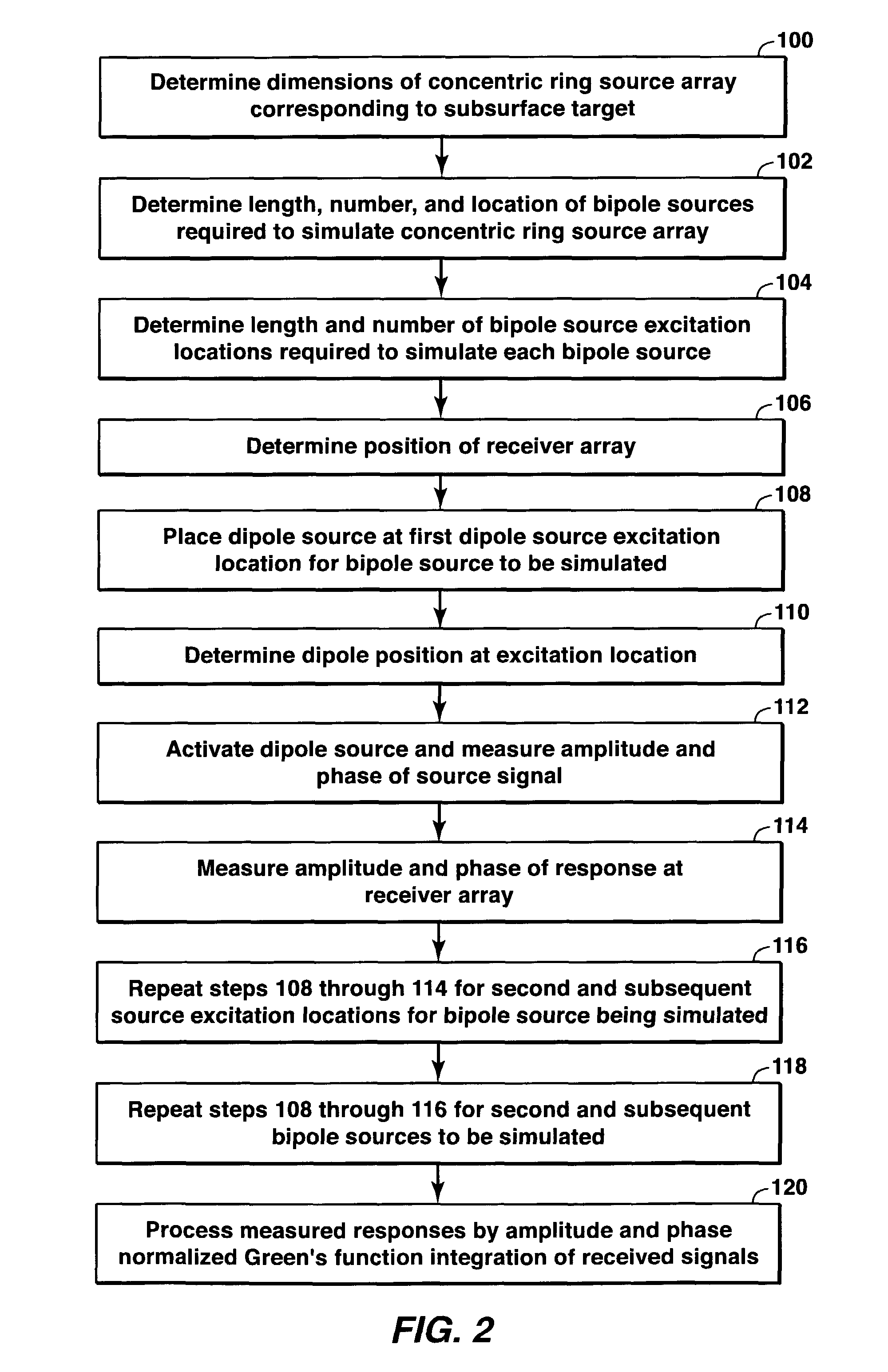Method of imaging subsurface formations using a virtual source array
a virtual source array and subsurface technology, applied in the field of controlled source electromagnetic surveys, can solve the problems of unfocused excitation, large number of electrode wires required in the concentric electrode ring, and the length of electrode wires that are required, and achieve the effect of reducing the number of electrode wires
- Summary
- Abstract
- Description
- Claims
- Application Information
AI Technical Summary
Benefits of technology
Problems solved by technology
Method used
Image
Examples
Embodiment Construction
[0023]The present invention is a method of simulating the advantageous multicomponent electromagnetic response of a resistive reservoir to excitation by a concentric ring source array, or its radial bipole equivalent, with a significantly reduced amount of electrode wire. In a preferred embodiment, the method uses one or more short dipole sources, each located sequentially at source excitation locations corresponding to a location of a radial bipole to be simulated, to obtain measurement data during field surveys in the region of the subsurface target to be imaged. Phase and amplitude receiver data are synchronized with data from the source locations and summed using a Green's function integration to determine the response of the target. The method has an inherent ability to create a large number of virtual source configurations by varying the number and positions of the source excitation locations that are integrated in the receiver data, thereby facilitating much higher spatial re...
PUM
 Login to View More
Login to View More Abstract
Description
Claims
Application Information
 Login to View More
Login to View More - R&D
- Intellectual Property
- Life Sciences
- Materials
- Tech Scout
- Unparalleled Data Quality
- Higher Quality Content
- 60% Fewer Hallucinations
Browse by: Latest US Patents, China's latest patents, Technical Efficacy Thesaurus, Application Domain, Technology Topic, Popular Technical Reports.
© 2025 PatSnap. All rights reserved.Legal|Privacy policy|Modern Slavery Act Transparency Statement|Sitemap|About US| Contact US: help@patsnap.com



